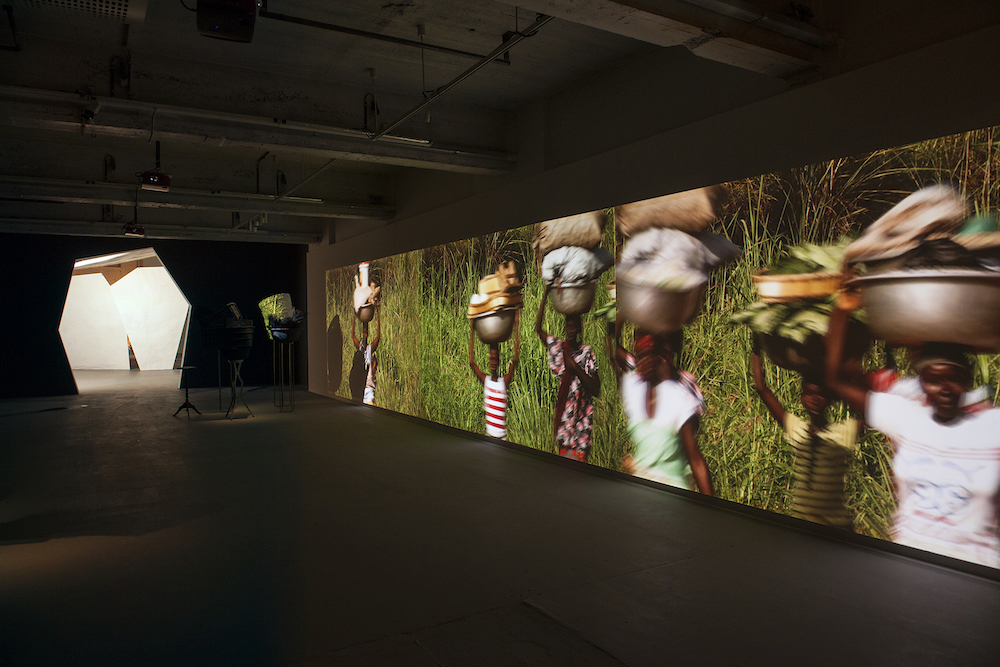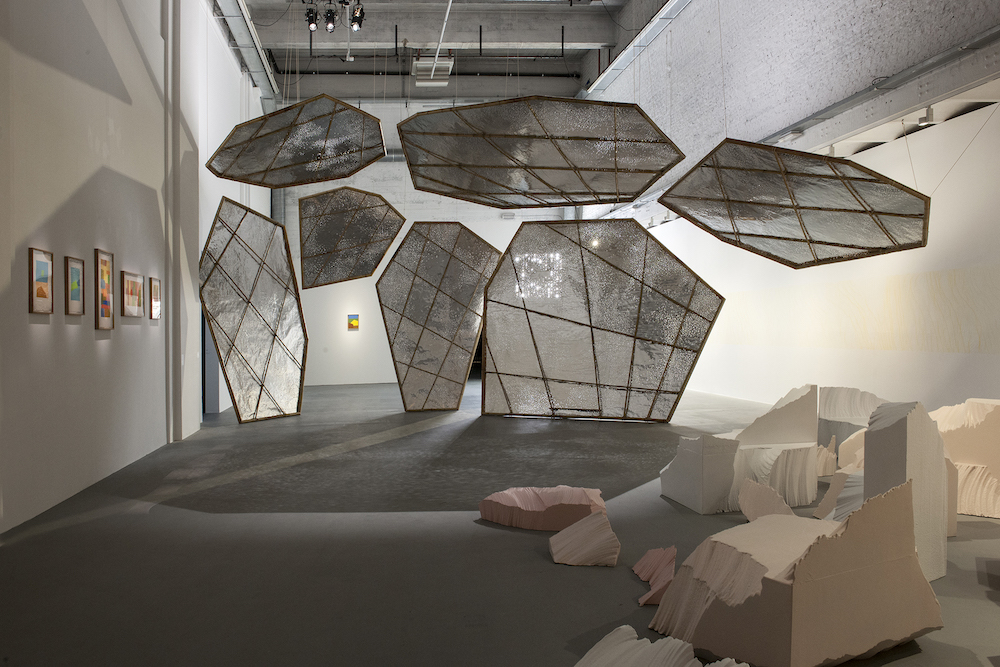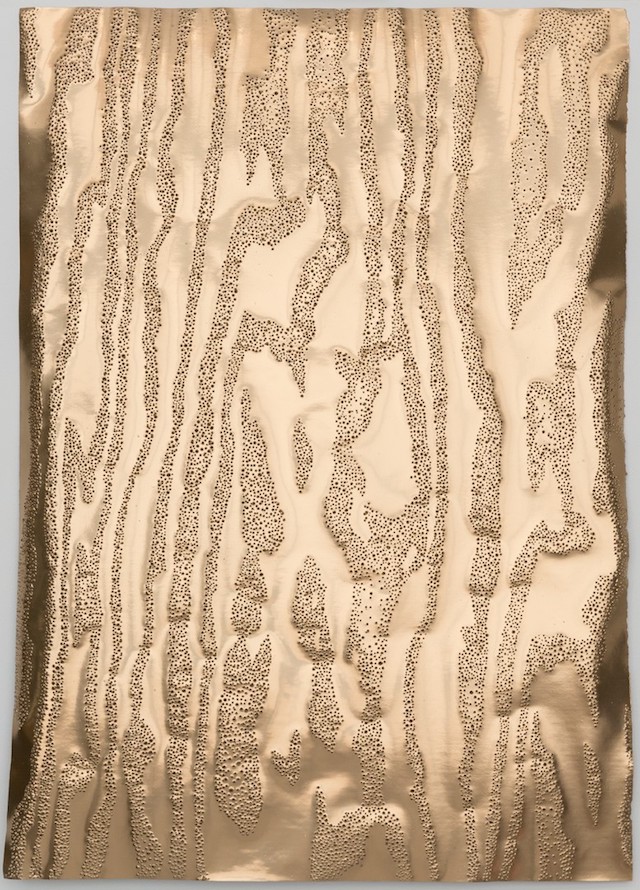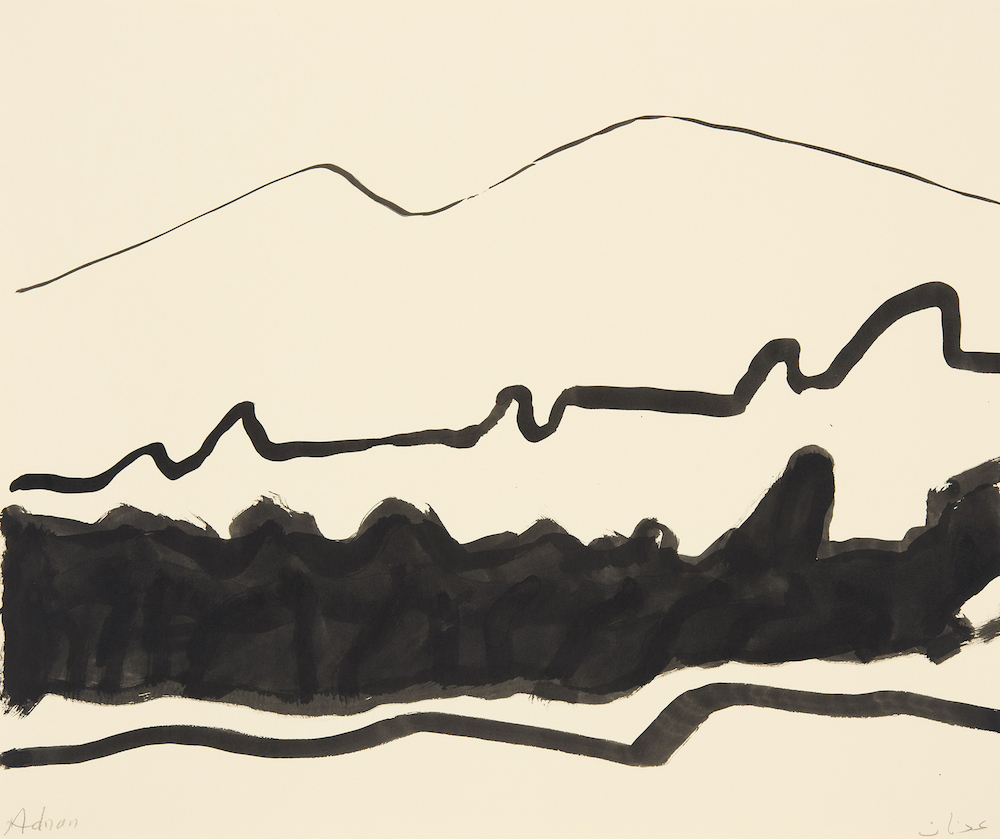Port travels to Brussels to experience the joint exhibition between Sophie Whettnall and Etel Adnan that explores the sublime wonder of the natural world

When asked which artist she would like to present alongside her own work at the CENTRALE for contemporary art, Belgian born Sophie Whettnall had one name, and one name only, on her mind – Etel Adnan. The joint exhibition, La Banquise, la forêt et les étoiles (The ice field, the forest and the stars) strikes such a harmonious visual chord that it’s easy to see why. Adnan’s deceptively diminutive canvasses, drawings, watercolours and engravings of landscapes are perfectly framed by her towering sculptures and films, themselves exploring our relationship to the natural world.
“I wanted to create a valid dialogue between our vocabularies and really integrate her work in mine,” explains Whettnall, while giving us a tour of the show. “There’s an interlace from the conversation. I think her paintings are amazing, their size lends so much quiet power and strength. Formally we have different ways of expressing landscape, but we speak the same language. She has a beautiful way of expressing herself, so soberly, simply, straight to heart of the matter. I love her.”. These complimentary codes gently explore the use of materials, light and place with assured hands, the partnership itself illustrating a Ying and Yang balance central to the exhibition.

Whettnall often focuses on light and analyses its presence and zones of absence and passage, so to begin the exhibition in semi darkness – in front of a video loop of women from Burkina Faso carrying their lives on their heads – is an intriguing way to start the gallery journey. The multi-media artist has stripped the former powerplant, which is normally broken into sections, expanding its space to house hole-punctured aluminium and bamboo kites (stars), acropolis marshmallow ice fields composed of latex mattress foam (ice field) and Japanese-style screens that have been laboriously drilled to follow the natural contours of the wood (forest).

There is an implicit invitation to interreact with these “lived objects”, Whettnall herself ushering me to sit on the ice field and feel for myself its malleable give. Understanding the physicality and habit of an artwork is key for the former winner of the Prix de la Jeune Peinture: “My work is always a repetition of a gesture. I need time to understand things, I need things to be repeated to me to create a personal ritual. It’s important for me to make things myself, from the beginning to the end.” I ask to what extent her art can be thought of as auto-biographical, given how much of herself is reflected in her video work, in particular. “In my case it’s impossible to separate the artist and the work that I produce, it’s inevitable that you’re always creating from what’s on your mind,” she notes, “Today, some artists distance themselves with deep concepts and alienate themselves from the act of making, of craft. I work with nature, work with what is in front of my eyes. I try to shape it and make it my own.”

If personal labour and materials takes centre stage in the show, temporality and a distinct sense of place occupies its fringes. One film, titled Bling Bling, is a simple shot of Greek waves, the shimmering pixels mirroring the subjects ebb and flow, cascading like water. The low-fi feel has an ephemeral quality to it due to the fact that that Whettnall’s “bad, very old camera doesn’t exist anymore…I can’t repeat this kind of distortion.”. Another film commissioned by the Museum of Contemporary Art in Santiago captures her arduous pilgrimage in Chile that mirrors an ancient route previously taken in the Middle Ages: “A woman’s place on a pilgrimage back then in Santiago was to give pleasure to travellers on their way to rid themselves of sin. So I did it myself, in high heels, 100 km in total over 10 days. I focused on what it means to be a woman today, what is our reality.”

This rewarding exhibition showcases two artists intimately tied together with their mutual love of the natural wonders that inspire and centre them. In addition to the visual arts, Adnan was an accomplished poet and essayist. Born in Beirut in 1925, for many years she resided in San Francisco, where from her window she could view Mount Tamalpoisa – a sacred hill for native Americans. Writing in 1986 in her book Voyage au Mont Tamalpais, she stated: “It became my garden. For Cézanne, Sainte-Victoire was no longer a mountain. It was an absolute. It was painting.” I pose a similar question to Whettnall, is there a place or space that inhabits your spirit in such a sublime way? “I try to go to Greece every summer. Do you know what Greece is? It is a meeting with the Gods. When you arrive there, you are in antiquity. But truly, the place forever in my heart is Stromboli, Italy. I did an extensive piece of work called Self-Portrait as a volcano in 2011 and I repeated the same drawing of Stromboli’s volcano over and over. I wanted a residency there so I could keep on doing this repetition of the landscape, re-sketching the memory of the figurative with industrial materials. Capturing the memory of my emotion. It will always be tied to me.”
La banquise, la forêt et les étoiles runs at CENTRALE, Brussels, until August 2019